-
×
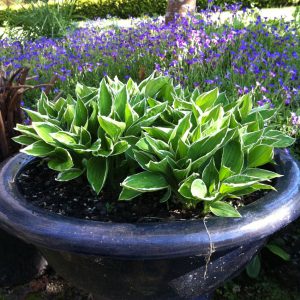 Hosta A P Mconnel
1 × $15.00
Hosta A P Mconnel
1 × $15.00
Advice, Collections, Informative, Uncategorized
Hosta
It was never my intention to accumulate Hosta as one of my collections and I have not deliberately sought them out but rather they have come to me. A great friend who had collected Hosta for many years suddenly decided she had enough of them and that I was to be the recipient of her collection. These plants have formed the foundation of my stock.
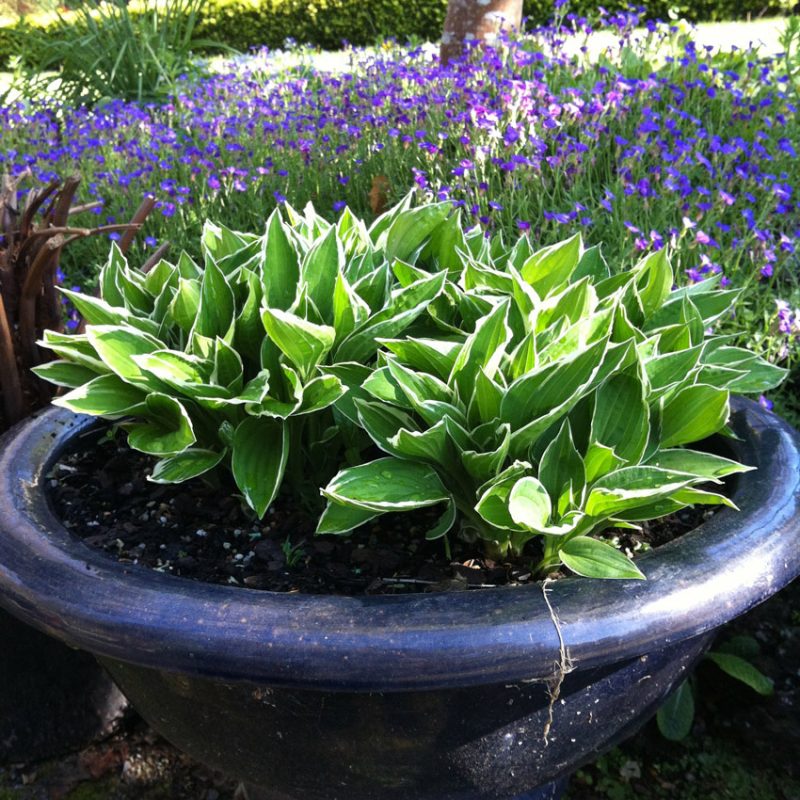
Hosta would have to be one of the best perennials for pot culture. If fed and watered they will make large clumps and are not at all phased about being pot bound. Failure to feed sufficiently will result in smaller foliage. The vast range of leaf colour, size and texture means that there is ample opportunity to play with plant pot combinations. Hosta are shade plants however some morning sun will enhance their leaf colour. 2-3 hours of morning sun is sufficient to bring out the best in their foliage. They will quite happily grow in light shade but the colours will be less defined. They are winter dormant plants so be prepared for some downtime. I use inserts for all my pots so over winter the Hosta can be tucked away and replaced with Tulips. The Hosta will be surfacing just as the Tulips begin to fade.
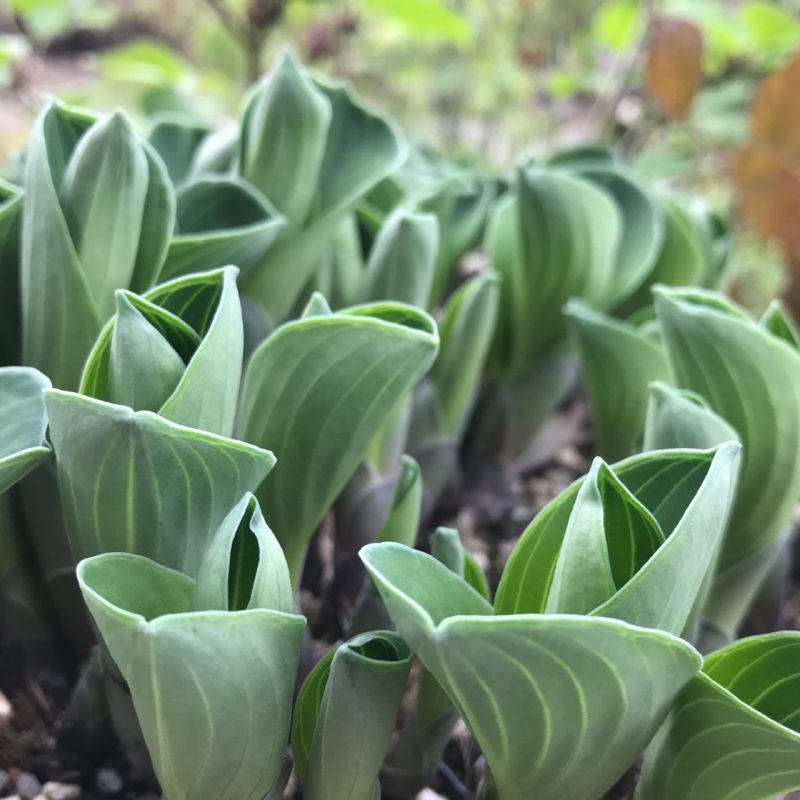
This is a genus with a vast number of species and cultivars. Many of them have differences only discernible to the avid collector but others are truely unique. They are plants selected for leaf shape. colour and texture and size, flowering is mostly a secondary consideration but as with all things in the plant world there are exceptions. Hosta plantaginea grandiflora has white flowers with a delicious sweet perfume, there are a number of hybrids from this species the most notable being honey bells. Hosta honeybells is a strong grower with soft mauve perfumed flowers. There are many plain leaf species hybrids which range in size from the tiny Hosta minutissima to the large Hosta emerald cascade, the later being a fabulous plant with big pleated spear shaped leaves. The smallest varieties are perfect for Kusamono, the larger ones make fabulous mounds of highly decorative foliage in big pots or urns. There are marked differences in vigour between the varieties. Some increasing rabidly others painfully slow. Most of the so-called blue Hosta, hybrids from seiboldiana, are slow increasers the exception being blue mouse ears it expands rapidly making very satisfying clumps.
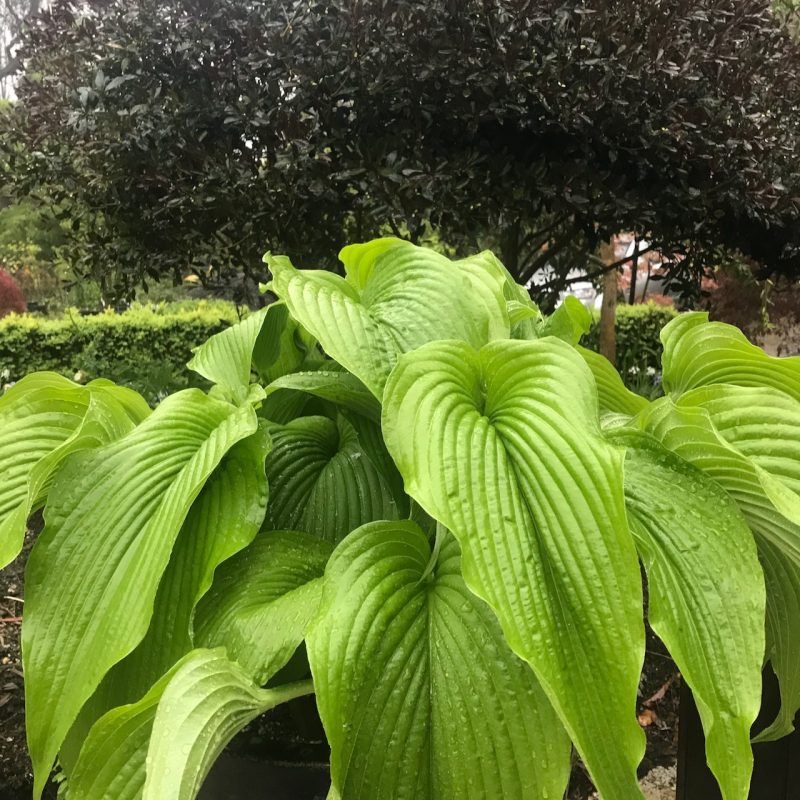
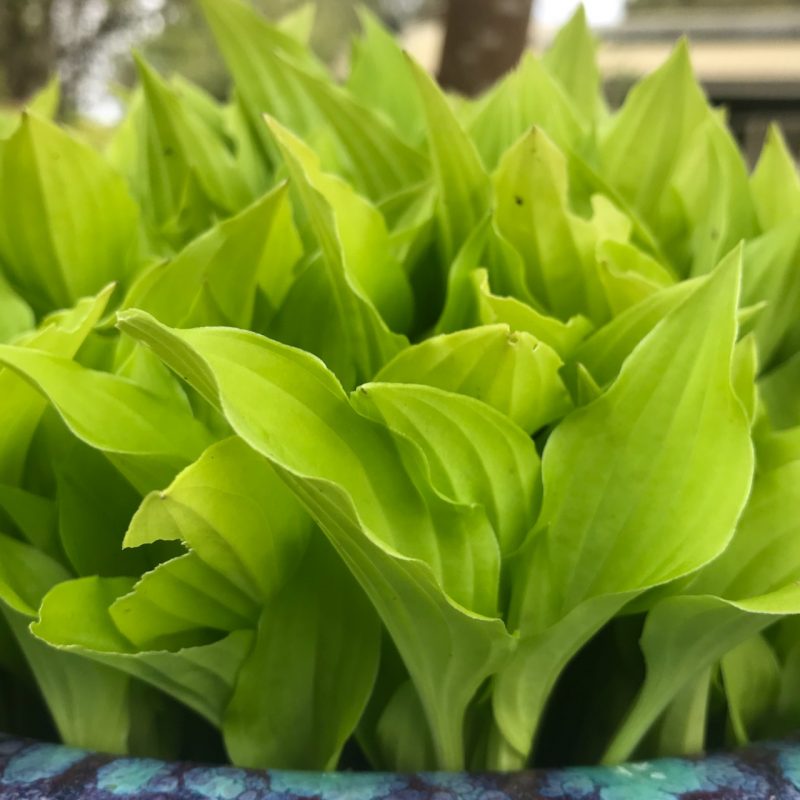
Hosta are very prone to attack by slugs and snails. This is the reason for me growing them in pots where the control of these garden pests can be achieved without putting local wildlife at risk.
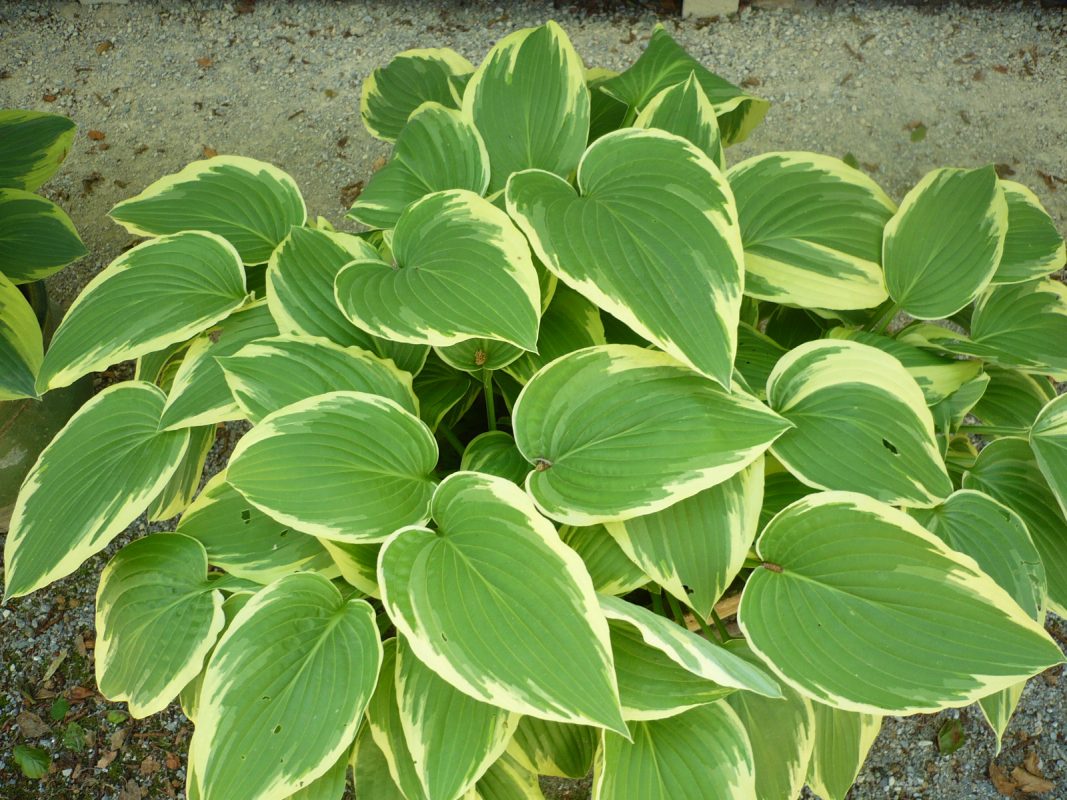
Below is a list of Hosta I grow. Many of them I have for sale but not all. Some in limited numbers, others I have plenty of. As the season progresses I will photograph them and put them into my online store but in the meantime enquiries are welcome.
Advice on pot cultivation.
Hosta take to pot cultivation very well. Keep the pots in a lightly shaded or morning sun position. Watering is as with any potted plant, when you water them completely soak the plant foliage and soil then allow them to dry out and repeat. It is the cycle of wet and dry that most plants like.
Do not put a small plant in a large pot because permanent wet soggy potting mix is certain death. Pot them on one pot size up at a time.
From the beginning of the grow season right through until dormancy Hosta should be liquid fed weekly both foliage and soil.
Hosta don’t mind being pot bound provided they are fed and watered correctly. unless you have a need don’t divide them too often as big old clumps are the most impressive. If you want to divide do so in late winter just before the growing season. Tease out the roots gently with a chop stick or garden fork removing all the potting mix. Cut the crown into segments using a bread or other sharp knife making sure you have both roots and a growing crown on each division.
-
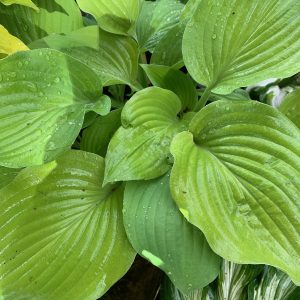 Hosta golden prayers (tokudama)$20.00
Hosta golden prayers (tokudama)$20.00 -
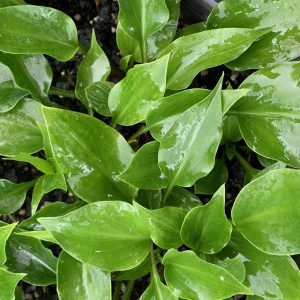 Hosta emerald city$16.50
Hosta emerald city$16.50 -
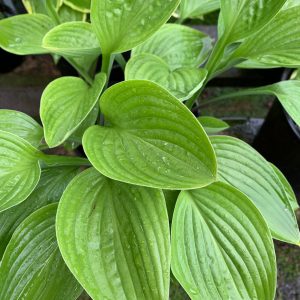 Hosta garnet prince$17.50
Hosta garnet prince$17.50 -
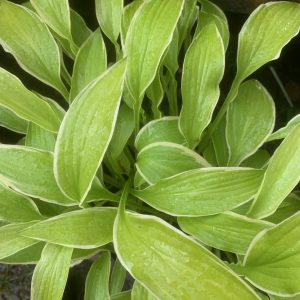 Hosta anne aret$17.50
Hosta anne aret$17.50 -
 Hosta be my valentine$17.50
Hosta be my valentine$17.50 -
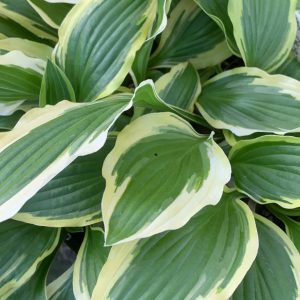 Hosta neat splash rim$18.50
Hosta neat splash rim$18.50 -
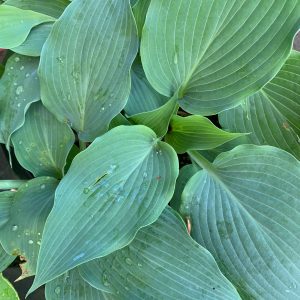 Hosta blue wedgewood$17.50
Hosta blue wedgewood$17.50 -
 Hosta sweet standard$18.50
Hosta sweet standard$18.50 -
 Hosta herifu$17.50
Hosta herifu$17.50
Ani machi
A.P.McConnel
Blue moon
Blue angel
Blue mouse ears
Bright lights
Emerald tiara
Emerald cascade
Feather boa
Francee
Gold drop
Gold standard
Guacamole
Halcyon
Hirao majesty
Honey bells
Kiwi
Lancifolia
Little sunshine
Longipes
Patriot
Plantaginea grandiflora
Purple n gold
Shogun
Sweet home chicago
Sweet standard
Sugar n spice
Tik tok
Ventricosa
Ventricosa aureomaculata
Ventricosa aurea
White chistmas
Wide brim
Yellow boy
Yellow splash

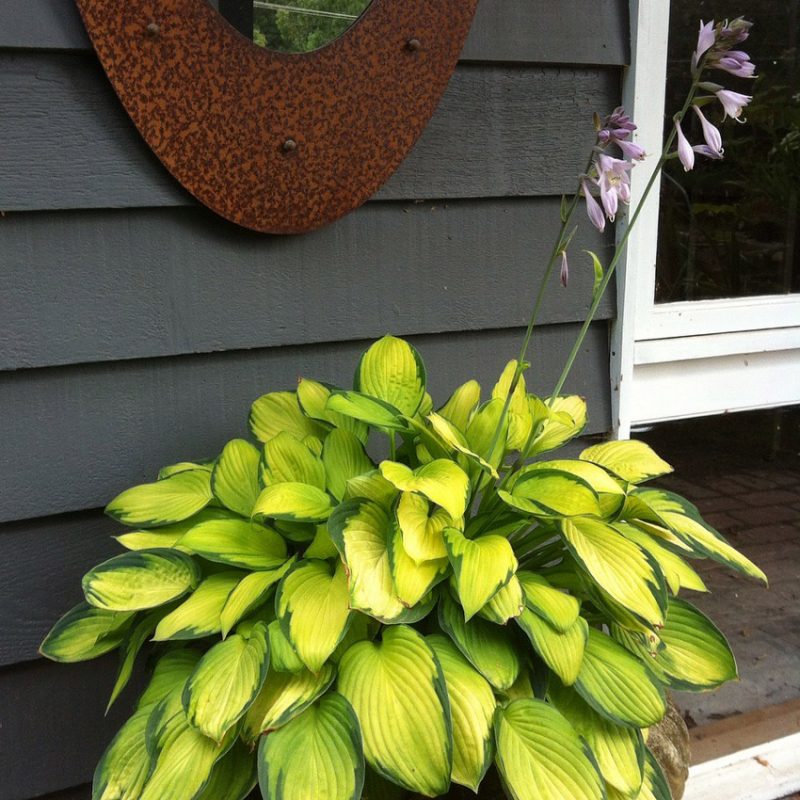
Like to buy a piece of emerald cascade please
Oh please share these beauties!! I’m on a mission to collect as many as I can, I love Hosta’s!
Hi
Have you only the pictured varieties for sale ?
I was looking for one similar to blue elegans( I think ) I like the ribbed foliage or perhaps blue grey / white I prefer the larger. Leaf
Your suggestions would be appreciated
I grew host as many years ago in the Adelaide hills
They like delphiniums are very popular with snails and slugs is this why you lift them ?
Thx
Have to admit that you image of gold standard is tempting ..
Hi Meg, I have 2 pots each of Deep blue sea, Blue angel and Krossa regal. Gold standard is a good strong cultivar and it increases well. Regards Craig